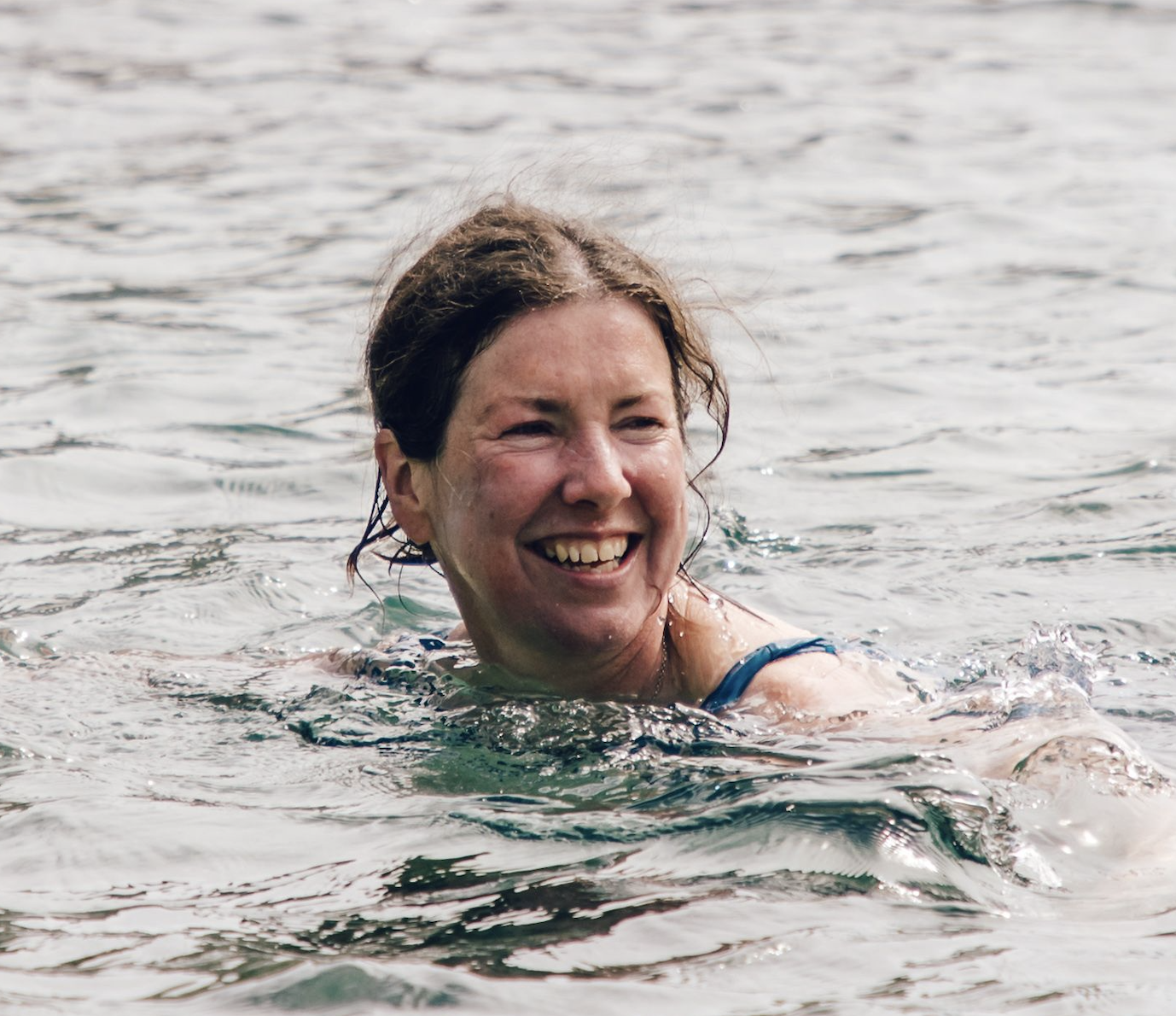Appropriately, Ystwyth means ‘supple’ in English. The river’s shifting currents braid the silvery sands and its course changes often, never quite the same as when last seen. In spate, its levels fluctuate dramatically, and plants such as alpine pennycress take root and then vanish.
From its boggy source in the Cambrian Mountains to Aberystwyth, where it slips quietly into the Rheidol river, Afon Ystwyth is a secretive stream. It moves west from molinia-choked uplands through gorges, forests, mining villages and the Hafod Estate, following the rocky escarpment of the Ystwyth fault line.
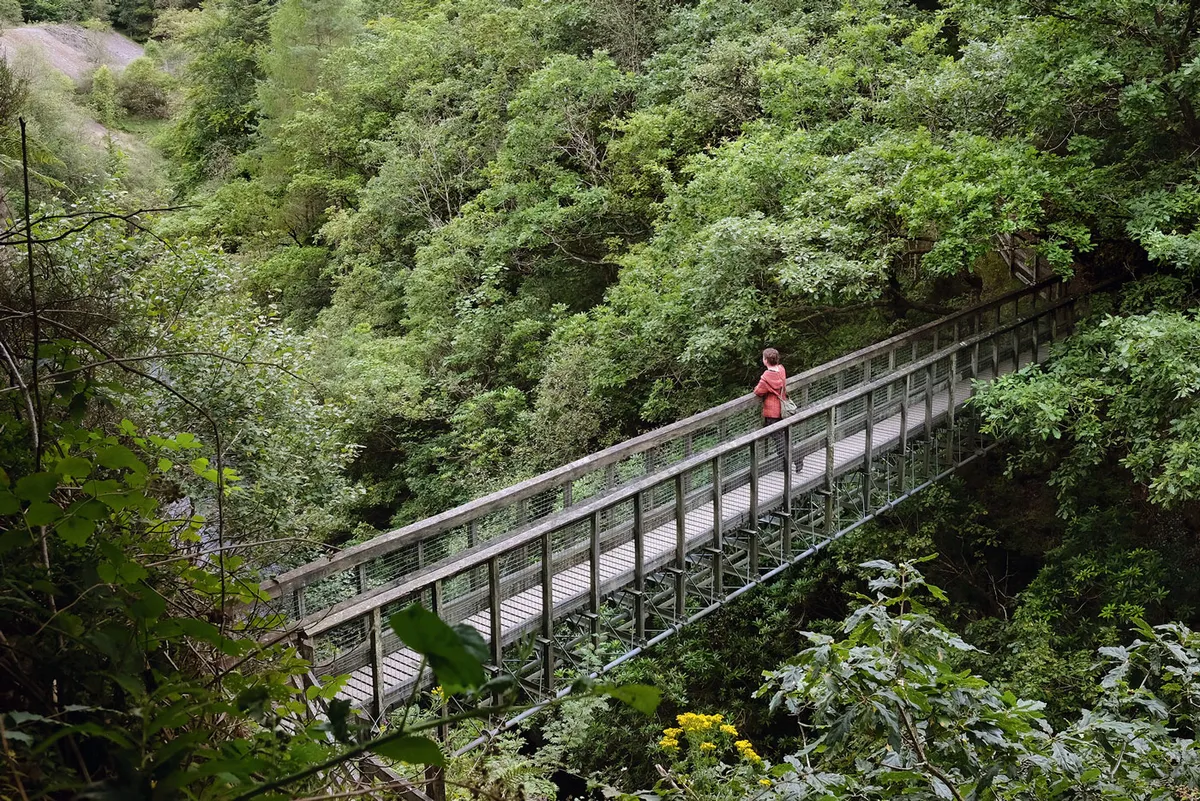
The fault line, rich in lead and silver-bearing galena, has been mined since the Bronze Age. Later, the industry was expanded by powerful 19th-century estate owners. Yet even then, when local villages such as Pontrhydygroes were acrid with smoke and busy with bakers, grocers, schools and chapels, the valley’s remote location meant that water, rather than imported coal, powered the machines. The river became poisoned and the fish disappeared. “Lord Lisburne’s mines have destroyed the fish as far as the sea; I have seen the Ystwyth full of fish; and now there is not a single fish in it,” reported one miner. But when the price of lead plummeted, the workers moved to collieries in the south, and left the mines to the bats. They still leak lead and zinc into the Ystwyth, though less so with the installation of filter beds.
Returned to the wild
The Ystwyth is still quiet and remote. The roads are still narrow, the buses circuitous, the mines derelict and the villages depopulated. But peregrines and meadow pipits inhabit the Cambrian Mountains. Trees mantle the hills and secretive animals – including, recently, pine martens – roam in the bosky expanse.
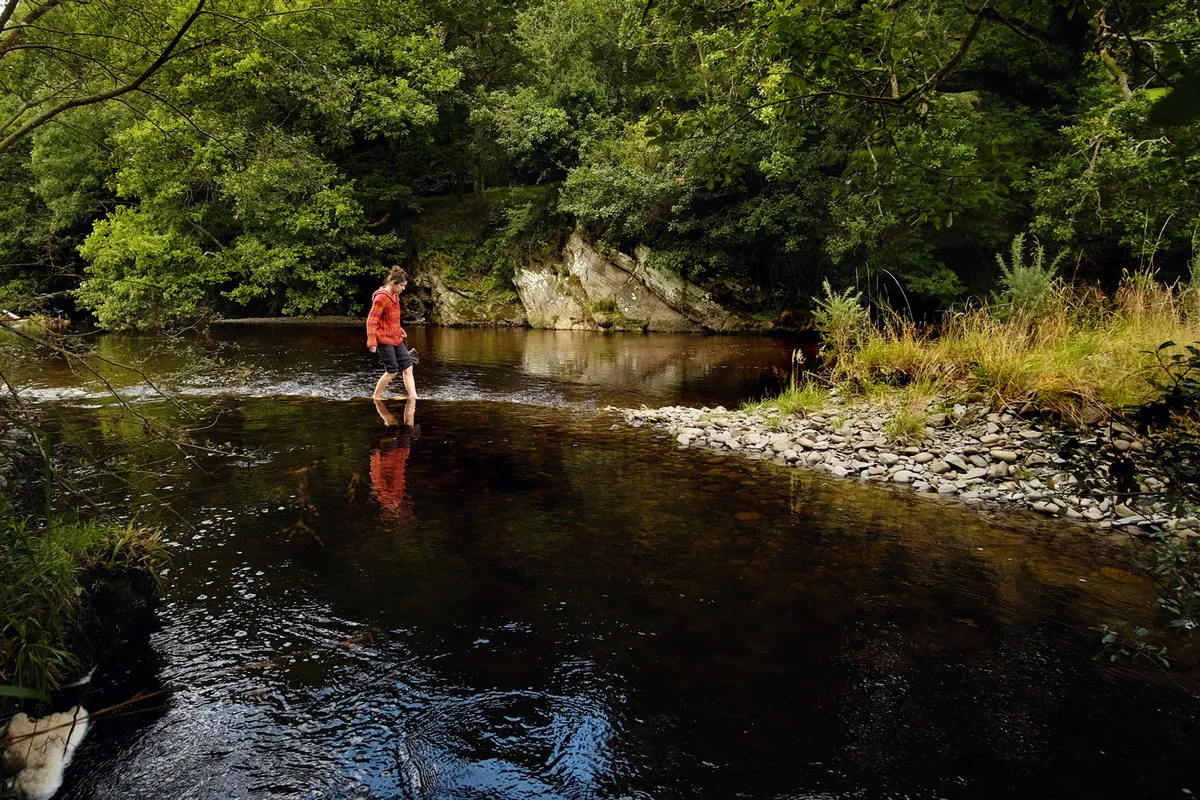
Untarnished by commercial interest, the villages nurture their own regeneration; forestry is the main business nowadays. Common bent grass, sea campion and tiny lead-moss colonise the silty spoil heaps and shores. And despite the river’s acidity, sticklebacks, minnows, salmon and sewin (sea trout) have returned.
As a student, I walked along the Ystwyth and camped unofficially on its banks. I love watching grey wagtails on the water beneath the wrecked mines at Cwmystwyth, and once saw a red-breasted merganser at the ford at Wenallt. The Hafod Estate is beautiful too, but it’s a spot downstream I love best.
River refuge
I found it one November after lingering in Pontrhydygroes, a shadowy village, defined by its bleak chapel, rusting petrol pumps, mossy tiles and shadowy cliffs. I watched rain land in dimples of stone and the river, narrow and tortuous, crashing blackly, barely glinting, beneath the bridge.
Following the river road, I crept, at a lay-by, down stone steps to a footbridge and into a different world. Here the river ran shallow and straight through a wide plain. Hills soared high on either side from a beach of metallic sand, pine-clad and scarred and scored by adits, spoil-tips and leats (waterways). Bronze light branded the sky. Suddenly it resembled an Alaskan wilderness, not dark but light.
This circular walk starts and finishes in Pontrhydygroes, but you can begin in Llanafan if you’re coming by bus from nearby Aberystwyth.
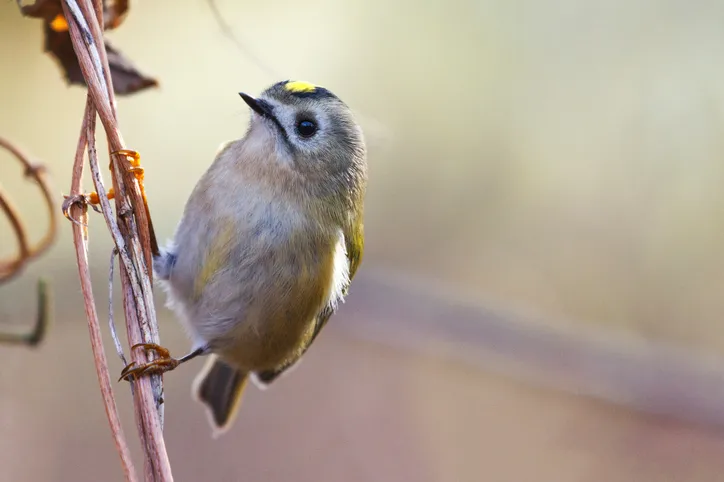
Afon Ystwyth walk
1. Southern banks
Start with coffee and cake at Cafe Cwtch, then pause a while by the waterwheel opposite, restored in 2002 in tribute to the miners who died here from acute lead poisoning.
Take the tree-shadowed river road, a quiet Sustrans bike route with occasional traffic. The river is heard but not seen, splashing through the gorge below.
Walk for just over a mile and then descend steps to a footbridge. A sycamore bough bends to the water and rises again. Peregrines wheel in the blasted crags and metallophyte lichens grow on the riverbank.
2. Grogwynion Nature Reserve
Back on the road, a stealthy buzzard flies into the blue air between conifers. Turn right between two boulders on an unmarked path to Grogwynion Nature Reserve. A heron stalks a stony island, and young goat-willow, hazel and birch grow on the floodplain. Skulk unseen on the riverbank and watch bubble trails and little fish flip on the water.
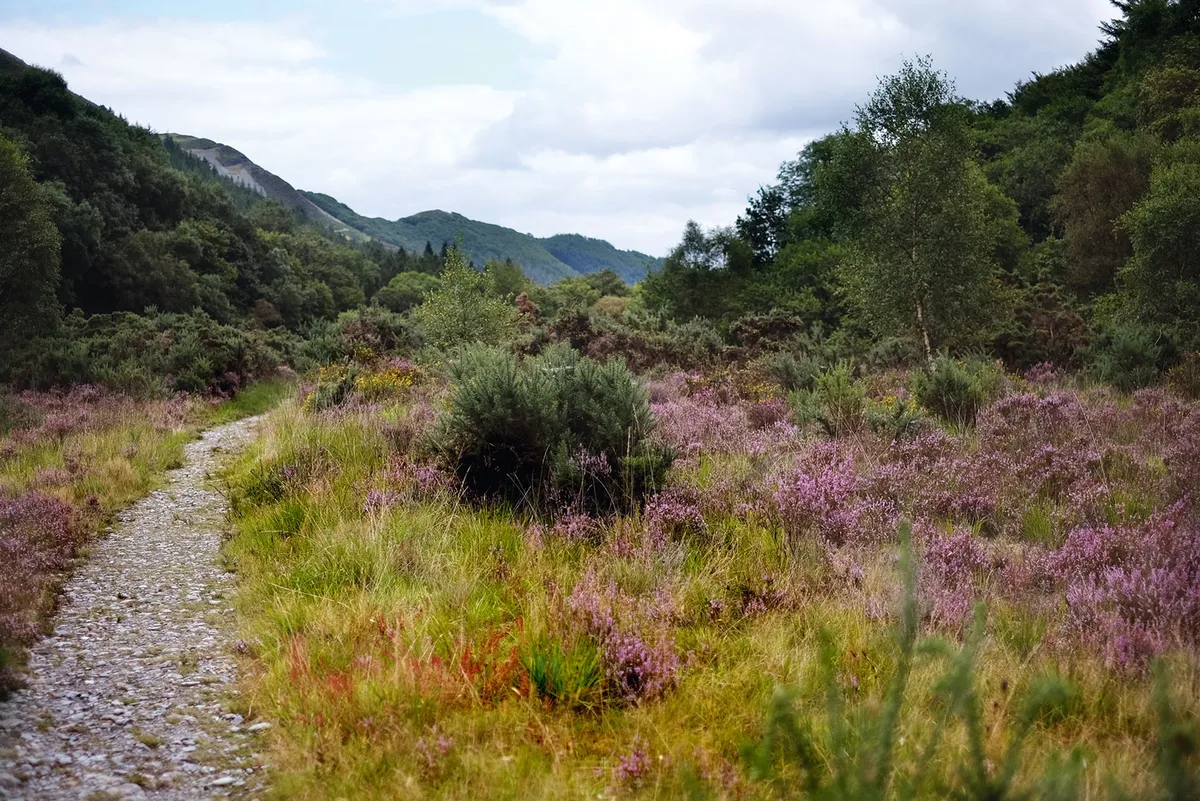
3. Follow footsteps
Turn into Tyn-y-Bedw forest and follow the white footstep signs right, meeting a stream. Walk downhill and then through two gates back on to the road.
4. Break at the bridge
Cross Pont Llanafan – a large 19th-century single arch built with tapered stone. For a good picnic spot, descend steps to a beach where buddleia and dark moss grow in the grey sand.
Take the waymarked path behind Dolau Afon cottage into the forest. Alder, hazel, holly and larch grow beneath taller conifers, fringed by gorse and fireweed. Keep to the main track, ignoring gates. Cross the forestry turning circle, looking out for goldcrests and siskins.

5. Bubbling waters
Climb a stile and descend through trees to a hillside with the river below. Go through a gate, then from the next stile, cross disused mines, passing a house and stile. Keep left of a private lane, then continue past a stile that leads down to the footbridge. Stay right on marked tracks, walking beside ash trees and goat-willow to reach Coed Maenarthur.
Again, stick to the river, passing old mine workings under tall spruce, soon arriving at a rocky gorge. White water boils in a cauldron. Epiphytes drip. The moss is acid green, the river deep and foaming, the rock gleaming like lead. Larch needles spin like gold dust through effervescent air.
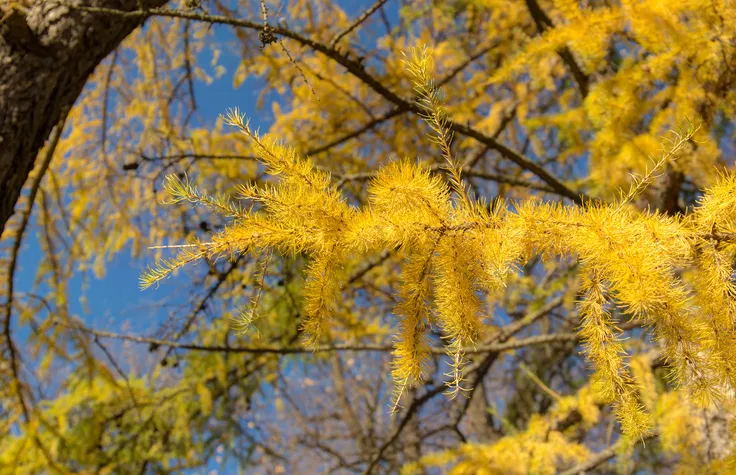
Switch back up steps on to a forestry track, following white footstep signs to the miners bridge and Pontrhydygroes.
For more information on the area go to the Visit Wales website.
